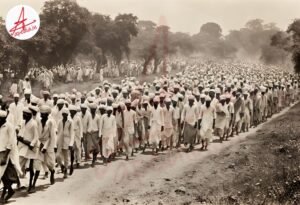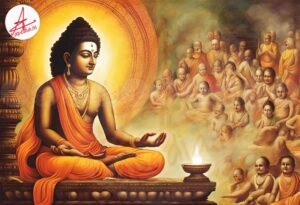Champaran district, Bihar, India
1917
Mahatma Gandhi
To dismantle the exploitative indigo plantation system
A decisive triumph for Indian farmers, marking a crucial juncture in India’s struggle for independence
Introduction
The Champaaran Satyagraha, orchestrated by Mahatma Gandhi in 1917, stands as a monumental episode in India’s fight for freedom. This non-violent civil disobedience movement not only highlighted the efficacy of peaceful resistance but also elevated Gandhi to national prominence.
Historical Context
During the era of British colonial rule, indigo plantations were a primary revenue source for the colonial administration. In the Champaran district of Bihar, a draconian system known as the tinkathia system coerced farmers into dedicating a substantial portion of their land to indigo cultivation. This system was marked by exorbitant taxes and unjust conditions, leading to widespread impoverishment and exploitation of the farmers.
Gandhi’s Intervention
In 1917, Mahatma Gandhi traveled to Champaran to investigate the dire conditions faced by the indigo cultivators. Confronted with the stark reality of their plight, Gandhi committed himself to championing their cause. Despite facing initial resistance from the British authorities, his relentless efforts garnered substantial support from local leaders and the farmers themselves.
The Satyagraha
Gandhi’s approach was rooted in non-violent resistance. He urged the farmers to defy the oppressive taxes and to limit indigo cultivation to a minimal portion of their land. The British response involved intimidation and arrests, but the movement’s momentum grew as increasing numbers of farmers joined the cause.
Key Events
- Gandhi’s Arrest: Gandhi’s arrest and subsequent imprisonment served to reinforce the movement’s resolve and visibility.
- The Champaran Inquiry Commission: In response to the escalating unrest, the British government established a commission to probe the indigo cultivation system.
- The Commission’s Findings: The commission’s investigation confirmed the system’s oppressive nature and advocated for reforms.
- British Concessions: The British authorities conceded to the demands by abolishing the tinkathia system and agreeing to compensate the affected farmers.
Significance of the Champaaran Satyagraha
The Champaaran Satyagraha represented a major victory for Indian farmers and marked a significant milestone in the broader independence movement. It underscored the power of non-violent protest and played a crucial role in elevating Gandhi to the forefront of the national struggle. The movement inspired subsequent generations of freedom fighters and fostered a growing sense of unity and purpose among the Indian populace.
Legacy
The Champaaran Satyagraha remains a powerful symbol of India’s quest for freedom. It serves as a testament to the effectiveness of peaceful resistance and the imperative of social justice. Gandhi’s leadership, alongside the bravery of the Champaran farmers, continues to inspire global efforts toward justice and equitable social reform.








